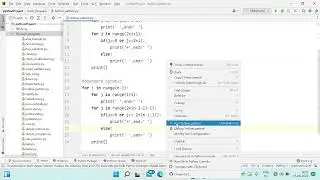C# - Part 57 - Purpose of .Equals Method - Tutorial For Beginners
The Equals method in C# is used to compare two objects and determine if they are equal. There are two main contexts to consider:
1. Equals(object obj): This is a method inherited by all classes from the base class System.Object. It performs a shallow comparison by default, meaning it checks if both objects refer to the same memory location. You can override this method in your custom classes to define your own equality logic.
2. String.Equals(string anotherString): This method is specific to the String class and checks if the contents of two strings are equal. It's case-sensitive by default. There are overloads of this method that allow you to specify culture information and perform case-insensitive comparisons.
Here's a breakdown of the key points:
Default behavior: Checks for reference equality for objects and content equality (case-sensitive) for strings.
Overriding Equals: You can override the inherited Equals method in your classes to define custom comparison logic based on your object's properties.
Case-sensitivity: By default, string comparisons are case-sensitive. Use overloads with StringComparison options for case-insensitive comparisons.
The key difference between the Equals method and the == operator in C# lies in what they compare:
== operator: This checks for referential equality. In simpler terms, it checks if both operands point to the same location in memory. This applies to both value types and reference types.
For value types (int, double, bool etc.), == compares the actual values stored in the variables.
For reference types (string, object etc.), == by default compares the memory addresses the variables refer to. So, even if two objects have the same content, if they are stored in different memory locations, == returns false.
Equals method: This provides more flexibility for comparison. By default, it also checks for referential equality for objects, mimicking the == behavior. However, the key difference is that Equals can be overridden in your custom classes to define your own logic for what constitutes equality. This allows you to compare objects based on their properties or specific criteria.
The String class provides an example of overriding Equals. The default String.Equals compares the content of the strings, but you can override it for case-insensitive comparisons or other criteria.
Here's an analogy: Imagine two books. The == operator checks if you're holding the same physical book (same memory location). The Equals method, however, can be like checking if the books have the same content (overridden for content comparison) or the same title and author (custom logic defined in your class).
In summary:
Use == for simple value comparisons or to check if reference type variables refer to the same object.
Use Equals for more complex comparisons or when you want to define custom equality logic for your objects.





![CALLIGRAPHY ON IPAD TABLET [Arabic script on an abstract background]](https://images.videosashka.com/watch/Uu6CVlzLGhA)

